
GEOJOURNAL
Scope & Guideline
Bridging Theory and Practice in Urban Studies
Introduction
Aims and Scopes
- Urban Dynamics and Sustainability:
Research on urbanization patterns, sustainability practices, and the socio-economic impacts of urban growth, including case studies on cities across various continents. - Environmental Change and Management:
Studies that assess climate change impacts, land use changes, and environmental degradation, employing remote sensing and GIS methodologies to analyze ecological trends. - Social Dimensions of Geography:
Exploration of social issues such as migration, inequality, and community resilience, focusing on how geographical contexts shape social dynamics and human experiences. - Health and Well-being:
Investigations into the intersections of geography and health, including studies on public health accessibility, environmental health risks, and the socio-economic determinants of health. - Cultural Geography:
Examinations of cultural practices, heritage, and identity formation within geographical contexts, emphasizing the role of place in shaping cultural narratives. - Geospatial Technology Applications:
Utilization of GIS, remote sensing, and spatial analysis techniques to solve complex geographical problems, enhance urban planning, and inform public policy.
Trending and Emerging
- Climate Change Adaptation and Resilience:
There is a notable increase in research focused on understanding and mitigating the impacts of climate change on various communities, emphasizing adaptive strategies and resilience planning. - Geospatial Data Science:
The integration of advanced geospatial technologies and data science techniques in geographical research is trending, with studies utilizing machine learning and big data analytics for spatial analysis. - Urban Health and Well-being:
Research that links urbanization with health outcomes is rapidly emerging, highlighting the importance of green spaces, accessibility to healthcare, and urban planning for public health. - Social Equity and Spatial Justice:
Increasing attention is being paid to issues of social equity and spatial justice, exploring how geographical disparities affect marginalized communities and influence access to resources. - Crisis and Conflict Studies:
The examination of geographical dimensions of crises, such as migration due to conflict or environmental disasters, is gaining prominence, reflecting global socio-political dynamics.
Declining or Waning
- Traditional Agricultural Studies:
Research focusing solely on traditional agricultural practices and their impacts has decreased, possibly due to a shift towards more integrative studies that consider broader socio-economic and environmental contexts. - Historical Geography:
Studies centered exclusively on historical geographical analysis have waned, as contemporary issues like climate change and urbanization take precedence in discussions about geography. - Generalized Environmental Policy Studies:
Research that addresses environmental policy without a geographical lens has become less prominent, reflecting a trend towards more location-specific and context-sensitive analyses. - Static Land Use Planning:
Research that focuses on static models of land use without considering dynamic factors such as climate change impacts and urban growth patterns is less frequently published. - Local Community Studies in Isolation:
Investigations that analyze communities in isolation from broader geographical or socio-political contexts have seen a decline, as interdisciplinary approaches gain traction.
Similar Journals
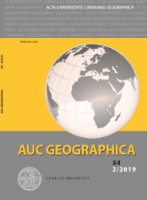
AUC Geographica
Navigating the Complexities of Our PlanetWelcome to AUC Geographica, a distinguished journal published by CHARLES UNIV PRAGUE, KAROLINUM PRESS, focusing on the expansive and interdisciplinary fields of Earth and Planetary Sciences, as well as Geography, Planning, and Development. With an ISSN of 0300-5402 and an E-ISSN of 2336-1980, this Open Access journal has been freely accessible since 2010, allowing researchers, professionals, and students to engage with high-quality scholarly articles without barriers. As of 2023, it holds a Q4 ranking in its respective categories, reflecting its commitment to contributing to the academic discourse despite competitive landscapes. Located in Prague, Czech Republic, at OVOCNY TRH 3/5, PRAGUE 1 116 36, AUC Geographica aims to foster collaboration and innovative research in the multifaceted relationships between human activities and the natural environment. With a publication history spanning from 1975 to 2024, this journal continues to be a vital resource for those seeking to advance knowledge and explore new dimensions in geography and Earth sciences.

Geoadria
Advancing Knowledge in Geography and Atmospheric ScienceGeoadria, an esteemed Open Access journal published by the University of Zadar in Croatia, has been at the forefront of disseminating valuable research since its inception in 1996. With a keen focus on atmospheric science, demography, earth-surface processes, and geography, this journal serves as a crucial platform for researchers and professionals aiming to explore the intricate relationships between these fields. Although it currently holds a Q4 quartile ranking in various categories, such as Atmospheric Science and Geography, its commitment to promoting innovative scholarly dialogue ensures its relevance and utility within the academic community. Geoadria is indexed in Scopus, with rankings that reflect its ongoing contribution to the social sciences and earth sciences, notably garnering attention in niche areas. With a dedication to open access since 1996, the journal stands as a testament to the University of Zadar's commitment to enhancing global knowledge. Researchers, professionals, and students interested in geography, demography, and environmental sciences will find Geoadria a vital resource for the latest empirical studies and theoretical discussions.
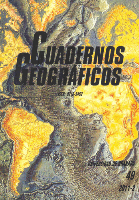
Cuadernos Geograficos
Championing open access for impactful geographical research.Cuadernos Geograficos is a distinguished open access journal published by UNIV GRANADA in Spain, dedicated to advancing the fields of geography, planning, and earth-surface processes. With an ISSN of 0210-5462 and E-ISSN 2340-0129, this journal has been serving as an essential platform for scholars since its inception in 1983. By providing rigorous peer-reviewed research, Cuadernos Geograficos contributes significantly to the academic discourse within these disciplines, holding a respectable position in the Q3 category for both Earth-Surface Processes and Geography, Planning, and Development as of 2023. The journal is indexed in Scopus, ranking #431/821 in Social Sciences and #100/179 in Earth and Planetary Sciences, affirming its relevance and impact within the scholarly community. With its commitment to open access since 1999, Cuadernos Geograficos ensures that vital research is accessible to a diverse audience of researchers, professionals, and students, fostering knowledge sharing and collaborative advancements in the geographical sciences.

Journal of Geovisualization and Spatial Analysis
Bridging Disciplines with Cutting-Edge ResearchJournal of Geovisualization and Spatial Analysis, published by SpringerNature, is an influential open-access journal specializing in the cutting-edge fields of geovisualization, spatial analysis, and their application in earth sciences and geography. Since its inception in 2017, this journal has established a prominent stance with a high impact factor and prestigious Q1 rankings across multiple categories, including Computers in Earth Sciences, Earth and Planetary Sciences (miscellaneous), and Geography, Planning and Development. The editorial board is committed to advancing innovative research and methodologies, providing a platform for scholars to disseminate their findings globally. With impressive Scopus rankings—placing it in the top percentiles among its peers—the journal serves as a vital resource for researchers, professionals, and students keen on understanding spatial data and its implications for geographic science. Its emphasis on rigorous peer review and rapid publication enhances accessibility to substantive research, thus fostering knowledge sharing within the scientific community. Based in Switzerland, the journal promotes a collaborative environment for interdisciplinary studies, making it an essential read for anyone involved in spatial analysis research.

Geographia Cassoviensis
Connecting Scholars to the Heart of Geographical InquiryGeographia Cassoviensis, published by the Pavol Jozef Šafárik University, Faculty of Science, Institute of Geography, is a pivotal platform for scholarly exploration in the fields of Earth and Planetary Sciences and Geography. Established in 2016, this journal has rapidly developed into a valuable resource for researchers and practitioners seeking to understand the intricate facets of geographical and environmental dynamics. With an ISSN of 1337-6748 and an E-ISSN of 2454-0005, Geographia Cassoviensis is indexed in Scopus and holds a position in the Q4 quartile for both its submission categories as of 2023, reflecting its burgeoning impact within the scientific community. Located in Kosice, Slovakia, this journal invites contributions that further the discourse in geography, planning, and related environmental studies. Although currently not an open-access journal, it aims to foster a deeper understanding of geographical concepts and their applications across diverse realms, making it a vital resource for students, researchers, and professionals alike.

GEOGRAFISKA ANNALER SERIES B-HUMAN GEOGRAPHY
Elevating scholarly discourse in human geography.GEOGRAFISKA ANNALER SERIES B-HUMAN GEOGRAPHY, published by Taylor & Francis Ltd, is a leading academic journal dedicated to advancing the field of human geography. With an ISSN of 0435-3684 and an E-ISSN of 1468-0467, this journal has established its reputation since its inception in 1976. It currently holds a prestigious Q1 ranking in Geography, Planning, and Development, reflecting its significant impact in the academic community with a Scopus rank of #243 out of 821 in its category, showcasing a 70th percentile standing among its peers. The journal aims to publish high-quality, innovative research that enhances our understanding of the complex interactions between humans and their environments. Although it operates on a subscription basis, the rigor of its peer-review process and the quality of published articles make it an essential resource for researchers, professionals, and students alike. By exploring pivotal themes in human geography, the journal not only contributes to academic discourse but also informs policy-making and practical applications in the field.

Geofocus-Revista Internacional de Ciencia y TecnologIa de la InformaciOn GeogrAfica
Pioneering Open Access Research in Geography and BeyondGeofocus-Revista Internacional de Ciencia y Tecnologia de la Informacion Geografica is a pioneering open-access journal published by the Asociación Española de Geografía, dedicated to advancing knowledge in the fields of Geography and Environmental Science. Established in 2001, this journal serves as a vital platform for researchers, scholars, and professionals to disseminate their findings in areas such as Environmental Engineering, Geography, Planning and Development, and Nature and Landscape Conservation. Despite its current categorization in Q4 across multiple quartiles, Geofocus aims to deepen understanding and stimulate dialogue on pressing geographic and environmental issues, offering a unique collection of interdisciplinary research contributions. Encompassing a diverse range of topics, the journal encourages innovative approaches to geographic challenges, making it essential for those passionate about geography and environmental management. With its commitment to open access, Geofocus ensures that valuable research is accessible to a global audience, further enhancing its impact in the academic community.
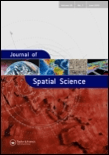
Journal of Spatial Science
Illuminating Connections in Atmospheric and Energy ResearchThe Journal of Spatial Science, published by Taylor & Francis Ltd, serves as a prominent platform for the dissemination of research in the interdisciplinary fields of geography, atmospheric science, and energy. With an ISSN of 1449-8596 and an E-ISSN of 1836-5655, this journal has established itself as a vital resource since its inception in 2004, boasting an impressive convergence period extending to 2024. Recognized in the Q3 quartile for Atmospheric Science and Energy (miscellaneous), and achieving a Q2 classification in Geography, Planning and Development in 2023, the journal not only reflects the evolving complexities of spatial science but also underscores its increasing relevance in addressing contemporary global challenges. The journal holds a commendable position in Scopus rankings, with notable placements in various categories, further highlighting its academic significance. Researchers, professionals, and students are encouraged to engage with the rich content offered, as the Journal of Spatial Science remains committed to advancing knowledge and fostering discussions pertinent to spatial analysis and its applications.
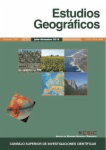
Estudios Geograficos
Connecting Global Perspectives on Geography and DevelopmentEstudios Geograficos, a prominent journal published by the CONSEJO SUPERIOR INVESTIGACIONES CIENTIFICAS-CSIC in Spain, serves as a vital platform for advancing the fields of geography and earth-surface processes. With an ISSN of 0014-1496 and E-ISSN of 1988-8546, the journal has been committed to Open Access since 1996, ensuring that its valuable research is accessible to a global audience. Recognized as a Q3 journal in both Earth-Surface Processes and Geography, Planning and Development, it plays a crucial role in shaping understanding and policy related to our planet. As of 2023, it holds a respectable rank of 562nd in Social Sciences Geography and maintains a percentile standing, reflecting its significance within the academic community. Covering a diverse range of topics, Estudios Geograficos aims to foster scholarly dialogue and disseminate innovative interdisciplinary findings, providing researchers, professionals, and students with critical insights and tools to address contemporary geographic challenges.
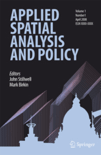
Applied Spatial Analysis and Policy
Advancing spatial insights for impactful policy.Applied Spatial Analysis and Policy, published by Springer, is a leading journal dedicated to advancing knowledge in the field of spatial analysis and its application in policy-making. With an ISSN of 1874-463X and an E-ISSN of 1874-4621, this peer-reviewed journal has been at the forefront of geographical research since its inception in 2009 and continues to thrive with a convergence extending to 2024. As a recognized publication in the Geography, Planning and Development category, it holds a commendable Q2 quartile ranking for 2023 and is positioned at rank #238 out of 821 in the Scopus classification, reflecting its strong impact and relevance within the academic community with a percentile of 71. The journal provides a robust platform for researchers and professionals to explore innovative methodologies and empirical studies that enrich spatial policy frameworks. While access to individual articles is not open access, its significant contribution to the field makes it a vital resource for anyone involved in spatial analysis and related disciplines.